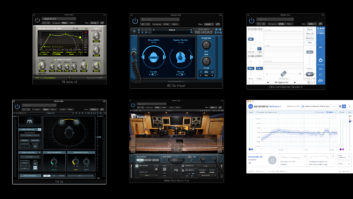More than ever, you have options for acquiring music software. You can buy it, subscribe to it and, in a more recent development, rent-to-own it. Your options for the latter increased this week with the announcement by Waves that the company is expanding its Flex program significantly, adding new price levels both below and above the original $19.99/month plan.
The Flex programs are not based on single plug-ins, but rather allow you to choose a specific number of plug-ins on a rent-to-own model. The higher the tier, the more plug-ins you get, and the larger the collection you can choose from.
All Waves’ rent-to-own plans have 24-month terms, after which you own the plug-ins outright. One of the new levels is a less expensive one called Flex Starter, which costs $9.99 per month and lets you choose five plug-ins from a collection of 40. Waves is offering a sixth plug-in as a “free” addition to the bundle for a limited time, lowering the total cost per plug-in to $39.96.
Read more Mix Blog Studio: Learning By Doing.
The standard Flex level remains at $19.99 per month and lets you pick 10 plug-ins (plus three free ones) from a select group of 80 (down from 85). Including the free ones, your cost per plug-in is a pretty good deal at only $36.
The other new level, Flex Pro, costs $29.99 per month but lets you choose 20 plug-ins plus four free ones, from a collection of 120. It has the lowest cost per plug-in of the three, at $29. The most significant disadvantage to the Flex programs is that you don’t get to choose from among all of Waves’ plug-ins, only the ones in the group made available for your Flex level. That said, there are plenty of excellent plug-ins in all three levels.
While searching the Waves site, I discovered that the company also offers rent-to-own plans for its Platinum and Mercury Bundles. Both provide an even lower per-plug-in cost but require larger monthly payments. Platinum is $49 per month for 50 plug-ins ($23.52 per plug-in) and Mercury is $149 per month for 160 plug-ins ($22.35 per plug-in).
A couple of other companies offer notable rent-to-own programs. Plugin Alliance, a plug-in distributor, lets you choose from 95 of its plug-ins (from companies like BrainWorx, SPL, Unfiltered Audio and others) for $29.99/month with a 24-month term. The price per plug-in comes out to $69.60.
Splice offers plug-ins from iZotope, Arturia and the D-16 group, among others. Rather than letting you choose a specified number of titles, it’s all à la carte. Terms range from four months to 25 months. What you pay per month depends on the price of the plug-in. So unlike the Waves and Plugin Alliance programs, the cost per plug-in is the same as if you buy it outright, but is spread out over the term of the agreement. Splice is unique in providing a DAW, Studio One Professional, as one its rent-to-own choices.
As you can see, rent-to-own programs vary in their details, but all offer you the ability to make monthly payments for software after which you own it outright. Doing it that way offers both advantages and disadvantages, as do the traditional purchase and subscription models. Let’s compare all three.
Traditional Purchase
Pros: You can buy any plug-in you want and own it immediately.
Cons: It’s the costliest way to go on a per-plug-in basis, and you need to pay the full cost up front.
Subscription
Pros: You generally get access to a developer’s complete catalog of plug-ins and can use as many as you want at a time. It’s definitely the most advantageous model in terms of the number and variety of plug-ins you can get for the money.
Cons: Your payments build no equity. Just like with the electric or gas company, if you stop paying, you’re cut off from the product.
Rent-to-Own
Pros: You pay relatively small monthly payments, and at the end of the term, you own the plug-ins.
Cons: The universe of plug-ins from which you can choose is limited, to a greater or lesser degree, depending on the individual company program.
Rent-to-own isn’t for everyone, but it’s an excellent option to have if you need to build up your plug-in collection but don’t want to pay a lot up front. The idea that you eventually own the software appeals to a lot of people, particularly those who are skittish about the subscription concept. Hopefully, more developers and distributors will get in on the rent-to-own action.







